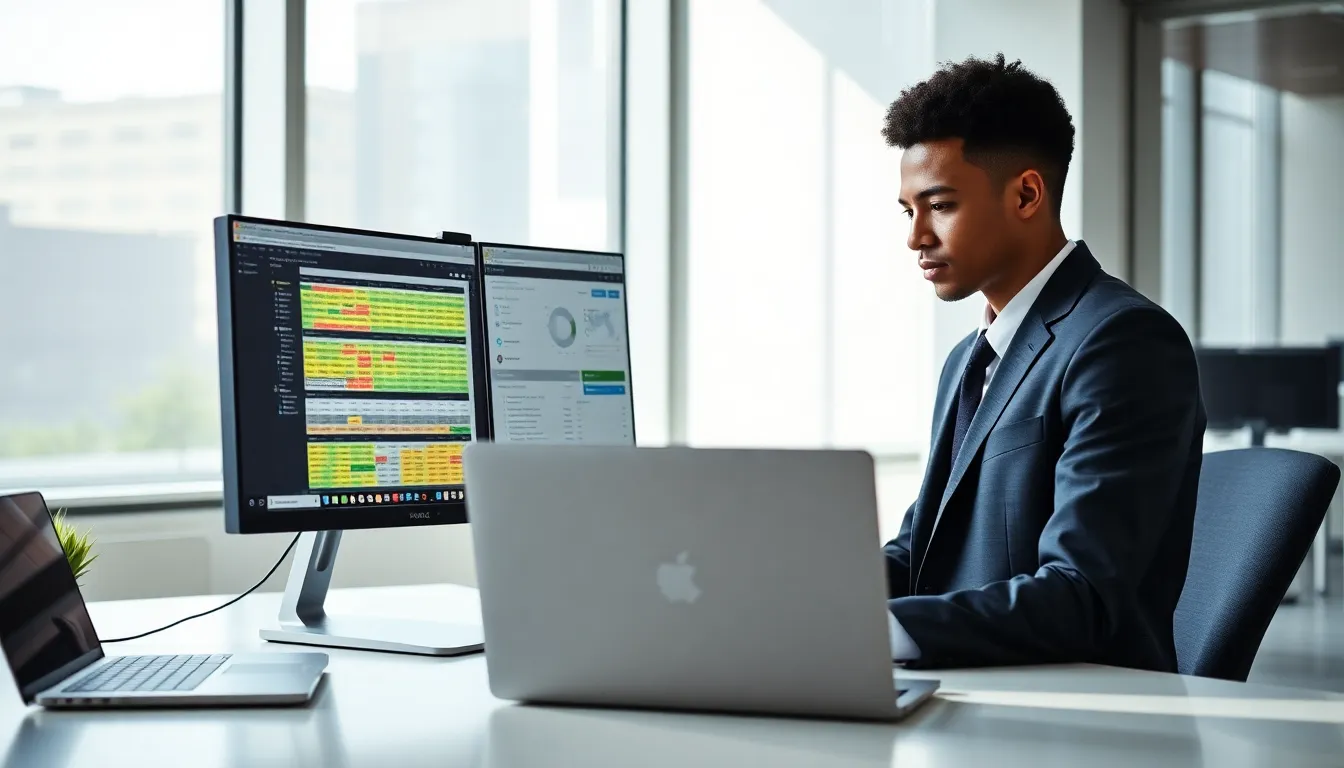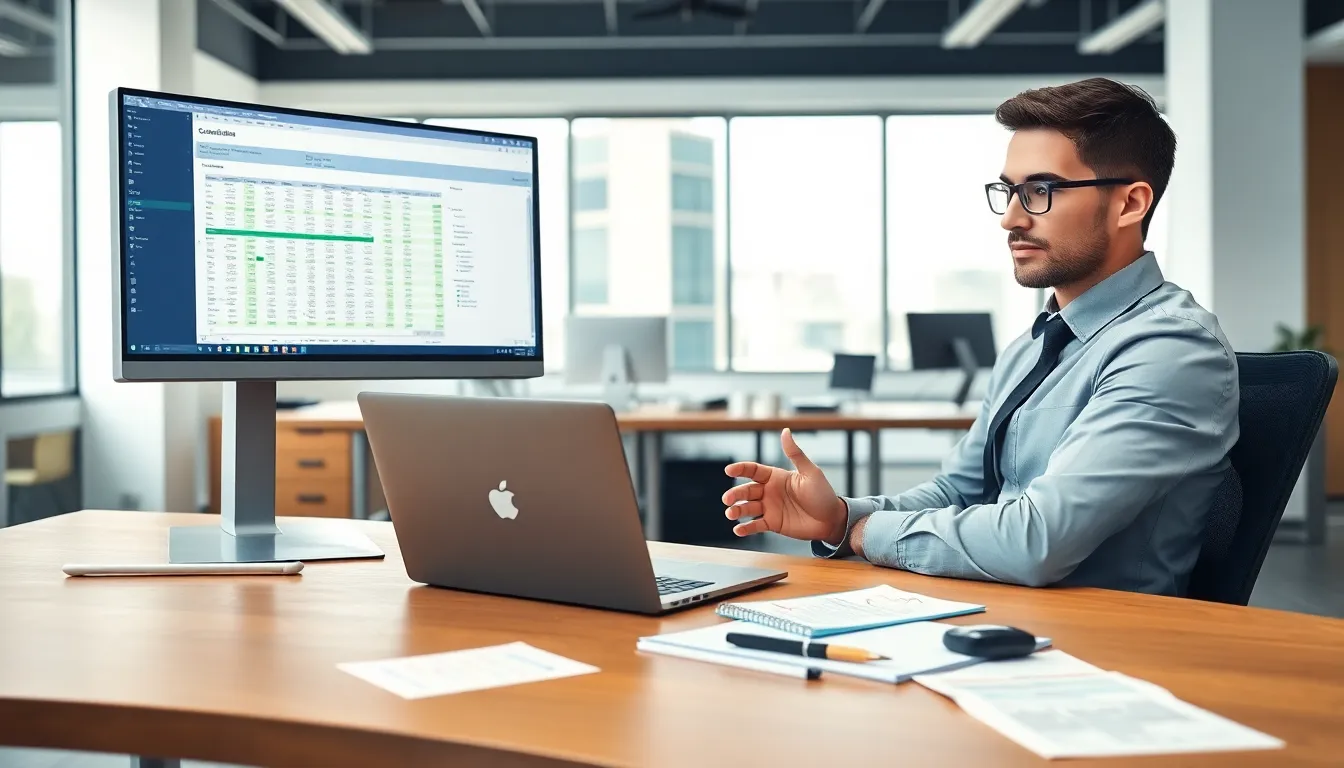In a world where productivity is king, dual monitors have emerged as the royal consultants of workspace optimization. Picture this: a setup that allows you to juggle an endless ocean of information without losing your sanity. Dual monitors with a laptop? It’s not just a nice-to-have: it’s practically a necessity for those looking to boost efficiency, especially during those long Zoom meetings where you could swear you saw a cat strolling through the background. Let’s jump into everything you need to maximize your workspace without turning it into a chaotic battlefield.
Dual Monitors With Laptop

Enhanced Productivity
Picture sitting at your desk with that familiar, focused gaze, but this time, you aren’t just staring at a single screen. With dual monitors, one can view a spreadsheet on one screen while taking notes on another. This dual-action approach literally helps the brain switch gears faster, allowing for greater output in less time. Studies show that users of dual monitor setups report accomplishing tasks up to 50% quicker. Who wouldn’t want to finish their tasks ahead of schedule and get a jump on their weekend plans?
Improved Multitasking
Gone are the days of switching tabs and losing track of where you were. With a dual monitor setup, multitasking reaches an entirely new level. Users can view emails and reference documents simultaneously, ensuring they stay on top of their workload without the constant headache of alt-tabbing. It’s like being able to read two books at once, but without getting lost in the plot twists.
Better Organization of Workspace
The beauty of two monitors lies not only in productivity and multitasking but also in their ability to declutter your workspace. Imagine a setup where everything you need is readily visible and easy to access. No more juggling between windows or hunting for that elusive tab. Instead, one can arrange projects, emails, and reference materials across screens. This organized approach reduces stress and enhances focus. Even a complicated project feels manageable when it’s spread out in front of you, like a carefully organized buffet.
How to Set Up Dual Monitors With a Laptop
Choosing the Right Monitors
Choosing the right monitors is vital for a successful dual setup. Think about size and resolution first. Larger screens make it easier to separate tasks visually. They might burn a bit of a hole in your pocket, but investing in quality monitors will pay off in terms of productivity and eye comfort. Aim for at least 24 inches, and consider options with a higher resolution to make everything sharp and easy on the eyes.
Connecting Your Monitors
Connecting dual monitors to your laptop is not as intimidating as it sounds. Most laptops come equipped with HDMI, USB-C, or DisplayPort outputs. Just check which ports your laptop has and match them to the monitors. For those whose laptops only support a single monitor output, a docking station can work wonders, transforming that lone port into multiple connections, making it feel like a magician’s trick.
Configuring Display Settings on Your Laptop
Once the monitors are physically connected, it’s time to jump into the display settings. Navigate to the settings menu on your laptop, and select “Display”. Here, one can configure how the monitors will work. Choose either “extend display” for that full dual monitor pleasure or “duplicate display” if the same content is needed on both screens. This is where the magic happens, and transforming one desktop into two brings immense satisfaction.
Common Issues and Troubleshooting Tips
Connection Problems
Everyone dreads that moment when the screens are supposed to light up, but nothing happens. If your monitors aren’t connecting, ensure all cables are securely plugged in. Sometimes, a loose cable can create a real nightmare. Another common issue is the monitor not being detected. A quick restart usually does the trick, or one can try unplugging and reconnecting the monitors, and let’s be honest, sometimes you just need to give technology a little attitude adjustment.
Display Settings Issues
Another common hiccup might be a display resolution that looks off. If icons appear to be too large or too small, check the display settings. Sometimes the laptop will try to offer a resolution it believes is best, but only your eyes can judge that. Adjusting the scaling options can significantly improve how things look and feel. Everybody wins.
Performance Considerations
Graphics Card Limitations
Even the best dual monitor setups come with their challenges, particularly concerning your laptop’s graphics card. Not every laptop can handle the extra workload of multiple screens. Check your graphics card specifications: it should adequately support dual displays. If it doesn’t, you may experience lag, poor display performance, or even limited resolution options. Sometimes it requires upgrading, but it’s worth it for that seamless experience.
Optimal Resolution Settings
When adjusting settings, keep an eye on resolution. Monitors often have different native resolutions, which means configuring them to play nicely together is key. Ensure both monitors are set to their optimal resolution for the best display quality. Proper settings help create a visually pleasing experience that won’t strain those precious eyes.
Best Practices for Using Dual Monitors
Arranging Monitors for Maximum Efficiency
When setting up dual monitors, the arrangement does matter, and it can significantly impact your workflow. Position the monitors at an angle that minimizes neck strain. The monitor closest to the laptop should be the primary one, as it’s often used more frequently. This will allow for less head-turning and keep your work more fluid.
Using Software Tools for Enhanced Workflow
A plethora of software tools can help maximize the dual monitor experience. Window management tools can assist in snapping windows into place, while applications like task managers or workflow organizers help keep everything in check. Consider tools like Microsoft PowerToys, which enhance your ability to manage windows across screens efficiently.

